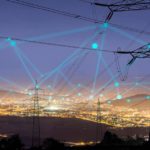
Businesses and organisations across the UK are under pressure to implement commitments and actions to achieve net zero carbon emissions by 2050. But, to truly commit to a carbon-neutral (or even a carbon-negative) future, cutting down on emissions is not enough. That’s why technologies for energy reuse are beginning to receive a lot of attention from governments and other stakeholders, says Matthew Margetts, Director of Sales and Marketing at Smarter Technologies.
Over the last decade, the UK has been developing technological options for the removal of carbon dioxide from the atmosphere. Carbon dioxide removal (CDR) and energy recycling have an important role to play in UK climate action. Carbon dioxide removal includes nature-based approaches, such as reforestation, as well as technology-based approaches. These include capturing carbon dioxide emissions from power plants and industries for underground storage or re-use.
Combined heat and power (CHP)
In the UK, the Government is backing the combined heat and power (CHP) model, also known as ‘cogeneration’. CHP is a highly efficient process that captures and utilises the heat that is a by-product of the electricity generation process. The heat generated is supplied to an appropriately matched heat demand (one that would otherwise be met by a conventional boiler and require additional fuel to be burnt). By making use of heat that would otherwise be wasted when generating electrical or mechanical power, CHP systems offer an efficient means of working towards reducing emissions. In fact, CHP systems avoid network losses and reduce emissions by up to 30% compared to conventional generation via a boiler and power station. Thus, for many organisations, CHP offers the most significant single opportunity to both reduce energy costs and improve environmental performance.
The CHP process is especially welcome for sectors that use significant amounts of energy, such as food production.
An example of CHP is The Shard in London, the tallest building in the EU with 72 storeys. This landmark building is powered by a natural gas fuelled CHP plant to operate at the highest level of energy efficiency. The plant provides energy for electricity and water heating to the surrounding area, reducing carbon emissions and contributing to the low-carbon footprint of the building.
Air source energy generation
In its attempt to significantly reduce household use of greenhouse gases to net zero by 2050, the UK government is aiming for the installation of 600,000 heat pumps per year by 2028. Heat pumps take heat from the air outside or the ground and circulate it around a central heating and hot water system. Heat pumps are cleaner and more energy-efficient than gas.
At the moment, over 80% of British domestic heating is supplied by gas boilers, which is why the government is driving a switch to heat pumps. However, heat pumps require electricity, which means that upgrades to the grid will be necessary. The electrification of water heating will also only result in decarbonisation if the electricity is renewable-sourced.
Another challenge with the switch to heat pumps is balancing the electricity load. Adding in lots of synchronised heating demand with heat pumps could result in network bottlenecks. Compounding this challenge is combining increased electricity demand with inflexible energy generation. Because heat usage fluctuates with the time of day and year, heat pumps will make electricity demand rise and fall more dramatically.
Smart solutions for load balancing
To support the roll-out of heat pumps, we will need to use electricity when it is available and when the network has the spare capacity. Smart meters and automated meter readers provide accurate, real-time consumption data to help utility providers, building managers and occupants make more informed decisions around optimising electricity usage.
Heat pumps themselves could be optimised using smart thermostats to save both money and energy. These smart thermostats can use artificial intelligence to automate temperature settings based on specific daily routines and heating needs.
Reaching a net zero 2050 will require a smarter and more flexible energy system based on data and digitalisation. Fortunately, today’s connected technology is helping us move in the right direction.









